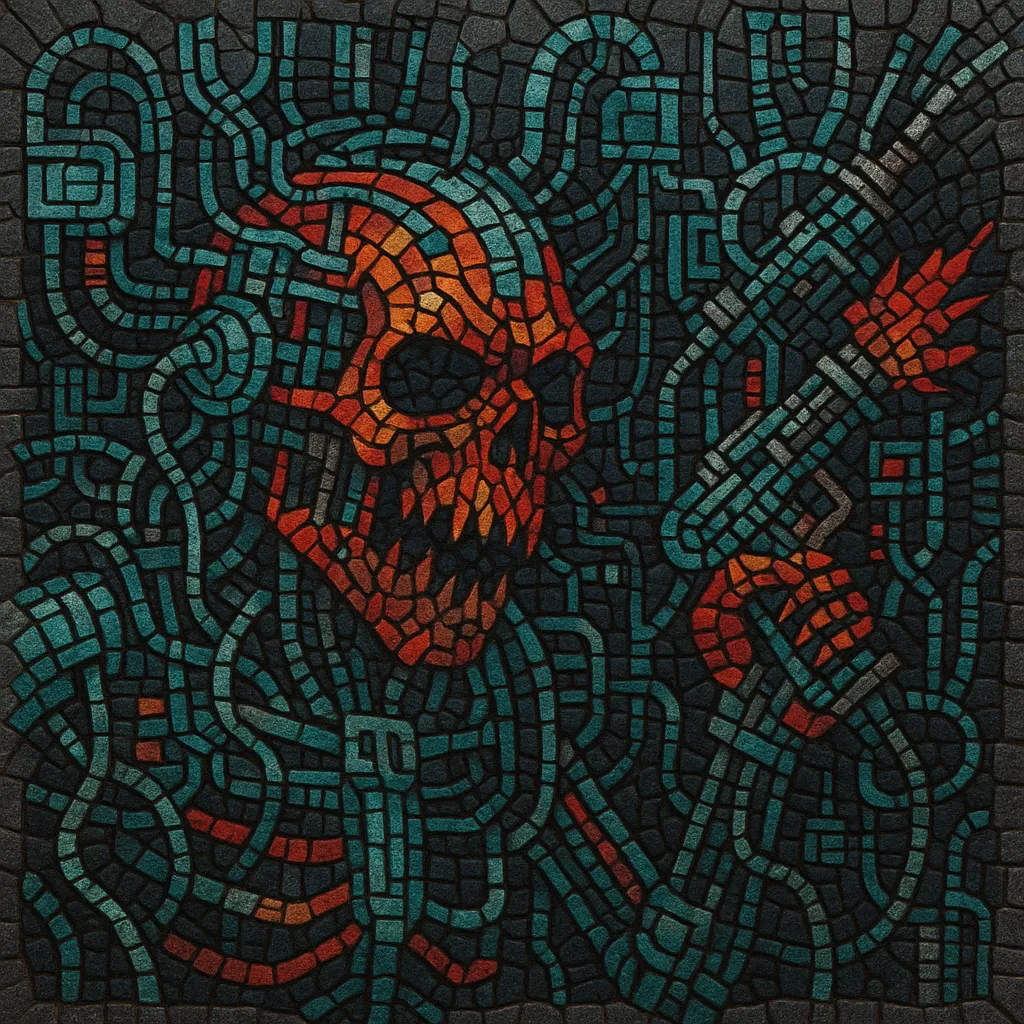
Cybergrind is an ultra-kinetic fusion of grindcore’s extremity with digital production and club-adjacent sound design. It pairs screamed or growled vocals and whiplash riffing with drum machines, trackers, and DAWs that unleash blast beats far beyond human performance, glitch edits, and brutal, bit-crushed textures.
Stylistically, it draws from breakcore, digital hardcore, industrial, gabber, and speedcore, translating grind’s micro-song intensity into a hyper-digital aesthetic. Song lengths are often short, arrangements swing between chaotic bursts and razor-cut grooves, and synths/organs/8‑bit timbres frequently replace or double traditional guitars. Lyrically and visually, cybergrind leans into dystopia, technophobia/techno‑fetish, internet culture, and cyberpunk imagery.
The groundwork for cybergrind was laid when grindcore bands began using drum machines and sampling, pushing tempos and precision beyond what a live drummer could sustain. Agoraphobic Nosebleed’s programmed-blast approach and the overlap with digital hardcore and breakcore created a clear pathway from analog ferocity to a synthetic, DAW‑driven assault.
By the mid‑2000s, acts like Genghis Tron, The Locust, and An Albatross codified the style by swapping or augmenting guitars with synths and sequences, while retaining grindcore’s brevity and intensity. This era cemented hallmarks such as ultra‑fast programmed drums, 8‑bit/lo‑bit tones, and glitch cuts. Parallel projects (e.g., WHOURKR, The Berzerker) further blurred lines with industrial, gabber, and breakcore.
After Myspace’s decline, cybergrind’s visibility dipped but did not disappear. DIY and Bandcamp ecosystems sustained one‑person projects and small labels. Artists experimented with mathcore dissonance, noise layers, and EDM-adjacent sound design, and the genre’s techniques seeped into electronicore and experimental metal.
A renewed wave emerged via Discord, Bandcamp, and Twitter communities. Newer artists hybridized cybergrind with hyperpop/digicore palettes, bright synths, and internet aesthetics while preserving blast‑programming and harsh vocals. This “Myspace cybergrind revival” reframed the style for a generation fluent in DAWs and meme-era visual languages.
Cybergrind’s visuals commonly reference terminal/CRT graphics, neon UI motifs, and cyberpunk body‑horror. Live performances range from full bands with samplers to solo laptop sets, highlighting the genre’s flexible, software‑centric core.

